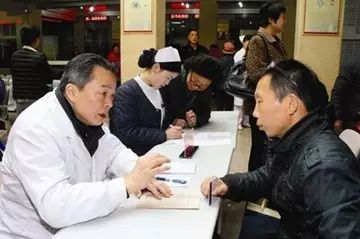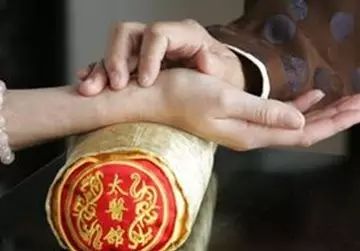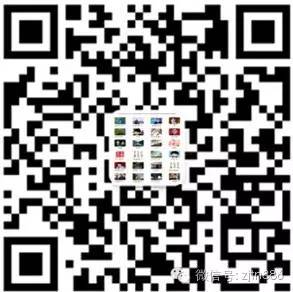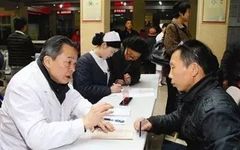Observation Diagnosis
Observation Diagnosis is a method of diagnosis in Traditional Chinese Medicine (TCM) that primarily infers internal changes in the body through the observation of certain external characteristics and excretions to diagnose conditions and determine appropriate treatments. It includes the following aspects:

(1) Observation of External Characteristics
The term “external characteristics of the body” refers to the three aspects of shape, color, and spirit. Observing these three aspects can infer certain diseases.
Observation of Shape: The shape of the human body includes posture and physique. Observing these two aspects can reflect internal changes and is closely related to diseases. Different abnormal postures indicate different diseases. For instance, if a patient exhibits tremors in the limbs and body, a constantly shaking head, or a posture as if reaching for something, it indicates symptoms of deficiency in vital energy (yuanqi) and internal wind of the liver (gan feng). The external shape of the body, such as height, weight, strength, and frailty, is also a basis for TCM to determine conditions. Symptoms like short stature, dry skin, narrow chest, and lack of muscle indicate physical weakness; while obesity, weakness in limbs, and lethargy indicate deficiency of yang energy.
Observation of Color: This primarily involves observing the color and luster of the face. Generally, if the body is diseased, the face may present the following colors:
Black, which may indicate pain, cold conditions, water retention, blood stasis, and deficiency in the back;
Red, which mostly indicates heat conditions, and patients with lung diseases often have a red face;
White, which often results from deficiency of qi and blood, deficiency of yang energy, or coldness in the spleen and stomach;
Yellow, which often results from weakness of the spleen and stomach, insufficient qi and blood, or internal obstruction of dampness;
Green, which often indicates blood stasis, internal cold, or deficiency of heart yang.
Observation of Spirit: The state of spirit and demeanor can reflect the vitality of the five organs, thus observation of spirit can diagnose many diseases. Generally, patients may exhibit the following abnormal states or expressions:
Loss of spirit, characterized by dull gaze and unclear consciousness, is caused by exhaustion of liver and kidney, heart, lung, and spleen qi;
Confused spirit, such as sluggish movements and lack of energy, is caused by deficiency of kidney yang, dual deficiency of heart and spleen, or phlegm-heat disturbing the heart;
False spirit, which is a sudden appearance of improved spirit in a patient with deepening illness, is not a good sign but rather a “return of light” phenomenon.
(2) Observation of Body Organs
This refers mainly to the head and facial features, as abnormalities in these organs often accurately reflect diseases in the body.
Observation of the Head: This involves observing the size of the head and hair. If a child’s head is excessively large, it may indicate poor intellectual development or deficiency of kidney essence; if symptoms such as sparse hair, yellow color, or hair loss occur, it may be due to blood heat, deficiency of kidney qi, or insufficient essence and blood.
Observation of Facial Features: This involves observing the five facial features to diagnose conditions.
Observation of the Eyes: This includes observing the color, shape, and spirit of the eyes. If the color is red, yellow, or white, it indicates the presence of disease. If the eyes are swollen or the eye sockets are sunken, it also indicates disease. If the eyes roll upwards, it indicates dual deficiency of kidney and spleen, blood deficiency, and qi weakness.
Observation of the Ears: Small and thin ears indicate kidney deficiency, while pus from the ears indicates damp-heat in the liver and gallbladder.
Observation of the Nose: A sunken nose bridge often occurs in syphilis patients, while red papules on the nose tip and surrounding areas indicate heat in the spleen and stomach.
Observation of the Mouth: This includes observing the shape, color, and moisture of the mouth. A crooked mouth often indicates stroke, pale lips indicate qi and blood deficiency, and cracked lips often indicate heat injuring body fluids.
Observation of the Tongue: This includes observing the color, spirit, shape, and condition of the tongue. A dry and dull tongue indicates yin deficiency; a red, crimson, or purple tongue indicates heat and stasis in the body; a tongue with prickles, cracks, or teeth marks often indicates disharmony in the spleen and stomach or internal imbalance.
(3) Observation of Excretions
Human excretions include urine, feces, vomit, saliva, and phlegm. The changes in their color, shape, quantity, and quality are observed. If urine is scant and yellow, it indicates heat; if feces are thin, it indicates cold-dampness; if vomit contains food, it indicates indigestion; if phlegm is thick, it indicates heat pain; if saliva is thick, it indicates damp-heat in the spleen and stomach.
Listening Diagnosis
TCM believes that the sounds emitted by the body’s organs and the odors of excretions can reflect internal changes and diseases. Listening diagnosis includes hearing sounds and smelling odors.

(1) Hearing Sounds
1. Hearing Voice. If the voice is loud and strong, with a light front and heavy back, it often indicates heat; conversely, if it is weak and low, with a heavy front and light back, it often indicates deficiency and cold. If snoring occurs during sleep, it indicates unsteady breath; if there is continuous moaning, it indicates bodily pain; if the voice is hoarse or absent, it indicates lung qi not dispersing or damage to qi and yin.
2. Hearing Breathing. If breathing is coarse and strong, it often indicates heat; conversely, weak and feeble breathing indicates cold. Generally, observing breathing can diagnose the following diseases: if breathing is difficult, short, and urgent, it indicates deficiency of kidney and lung, and loss of qi; if breathing is rapid and obstructed, it often indicates yin deficiency with excess fire, which may lead to qi counterflow; if breathing is rapid and short, with no phlegm in the throat, it often indicates lung qi deficiency, which may lead to shortness of breath; if breathing is weak and timid, it indicates bodily weakness and insufficient qi.
3. Hearing Cough Sounds. If the cough sound is mixed and accompanied by nasal congestion, it may indicate wind-cold infection; if the cough sound is low and fatigued, it may indicate cold or damp cough. A dry cough with little or no phlegm may indicate dryness-heat symptoms; a cough with thick phlegm and hot breath from the nostrils indicates lung heat; a cough that comes and goes, especially with blood, indicates a severe cough infection; a weak cough with low sound and shortness of breath may indicate lung deficiency.
4. Hearing Sounds of Vomiting, Belching, Hiccups, Sneezing, Bowel Sounds, and Sighing.
If the sound of vomiting is weak and the vomit is clear, it indicates deficiency-cold; if the sound of vomiting is loud and the vomit is thick and has a bitter or sour taste, it indicates excess heat; if there is a feeling of reverse stomach or vomiting in the morning, it may indicate deficiency of both spleen and kidney or indigestion.
Belching is a common phenomenon after eating. If the belch has a sour and rotten smell and is accompanied by bloating, it may indicate indigestion; if the belch is loud and frequent, it indicates liver qi invading the stomach; if the belch is low and has no sour smell, it indicates spleen and stomach deficiency, often seen in the elderly or those with chronic illness.
Hiccups are a self-controlled shock from the throat, often caused by stomach qi counterflow. If the hiccup sound is continuous, loud, and strong, it indicates excess heat; if the hiccup sound is weak and low, it indicates deficiency heat; if the hiccup sound is moderate, short, and has no adverse reactions, it may be due to eating too fast or catching a cold.
Bowel sounds are noises from the abdomen. If bowel sounds are loud, it may indicate excess wind, cold, or dampness; if bowel sounds decrease with eating and increase when hungry, it indicates spleen and stomach deficiency.
Sneezing indicates wind-cold infection, while sighing indicates emotional distress and stagnation in the chest.
(2) Smelling Odors
If the body is diseased, the odors emitted by various organs will differ from before, possibly emitting unpleasant odors, such as foul smells. Foul-smelling sweat indicates that a patient with weakness often sweats, and if the sweat has a fishy or musty smell, it indicates damp-heat lingering in the skin and fluids; bad breath often results from stomach heat, indigestion, ulcers, or poor oral hygiene; foul nasal odor often results from nasal congestion; body odor may be due to ulcers or decay.
Inquiry Diagnosis
Inquiry diagnosis is an important method in TCM diagnosis, primarily through questioning the patient or their family to understand the patient’s daily living conditions, as well as the occurrence, development, and current state of the disease, in order to determine appropriate treatment methods. Generally, inquiry includes the following aspects:

(1) Inquiry about Diet
As the saying goes, “disease enters through the mouth,” inquiring about diet is crucial for understanding the patient’s condition and the cause of the disease. Inquiry about diet includes asking about the patient’s taste preferences, water intake, and appetite, as these three aspects are closely related to the patient’s condition.
Inquiry about Taste: If the mouth is bland or tasteless, it indicates deficiency of spleen and stomach qi; if there is a sweet or sticky sensation, it indicates damp-heat in the spleen and stomach; if there is a sour and spoiled taste, it indicates food injury; if there is a bitter taste, it indicates heat; if there is a sour taste, it indicates liver and stomach heat accumulation.
Inquiry about Water Intake: If there is thirst and a flushed face, it indicates excess heat; if there is no thirst, it indicates cold; if there is thirst but little drinking and accompanied by body heat, it indicates damp-heat obstruction; if there is thirst with immediate vomiting after drinking, it indicates water counterflow due to phlegm; if there is excessive thirst, frequent drinking, and weight loss, it indicates diabetes.
Inquiry about Appetite: If there is a strong appetite and easy hunger, it indicates excess stomach fire; if there is easy hunger but no desire to eat, it indicates deficiency of stomach yin; if there is a preference for unusual foods, it indicates internal accumulation of parasites; if there is a decrease in appetite, it indicates spleen deficiency, food stagnation, or damp-heat in the liver and gallbladder.
(2) Inquiry about Sleep
The quality of sleep is closely related to physical health, and there is a mutual influence between the two.
If falling asleep is difficult and waking easily, it indicates dual deficiency of heart and spleen; if restless in bed with abdominal bloating, it indicates food stagnation; if falling asleep is difficult with many dreams and night sweats, it indicates disharmony between heart and kidney. If the body is weak, easily sleeps, and has cold limbs, it indicates deficiency of heart and kidney yang; if there is dizziness and easy sleepiness, it indicates internal dampness; if there is easy sleepiness after meals and weakness in limbs, it indicates deficiency of spleen qi.
(3) Inquiry about Bowel Movements
Inquiry about bowel movements includes asking about the frequency and timing of urination and defecation, as well as their color, odor, quantity, and sensations at the time.
Inquiry about Feces: Generally, one or two bowel movements per day is normal; if there are none or too many, it indicates abnormality, which may indicate constipation or diarrhea; if feces are loose and accompanied by abdominal bloating and pain, it indicates spleen deficiency; if feces are sometimes hard and sometimes loose, it indicates liver qi stagnation affecting the spleen; if there is burning sensation during defecation, urgency, and unsatisfactory bowel movements, it indicates damp-heat in the large intestine; if there is fecal incontinence, it indicates deficiency of spleen and kidney yang. Yellow and sticky feces indicate damp-heat in the stomach and intestines; if feces contain blood and are in a sticky state, it indicates dysentery.
Inquiry about Urination: If urination is difficult or dribbling, it indicates kidney deficiency, blood stasis, or damp-heat; if urination is frequent or clear, it indicates kidney qi instability. If urine is red, it indicates heat injuring blood vessels; if urine is yellow, it indicates heat; if urine is turbid, it indicates turbid essence leaking or damp-heat descending; if urine is clear and frequent, it indicates cold.
(4) Inquiry about Cold and Heat
Cold and heat include alternating cold and heat, aversion to cold with fever, heat without cold, and cold without heat, each symptom indicates a change in a certain aspect or organ of the body. Alternating cold and heat may be a precursor to lesser yang disease; aversion to cold with fever indicates exterior cold, exterior heat, or exterior deficiency; heat without cold indicates heat conditions; cold without heat often indicates cold conditions, while low-grade fever indicates yin deficiency.

(5) Inquiry about Head and Body
Inquiry about Head and Body. This includes asking about the head and body, which includes the limbs, chest, ribs, stomach area, and abdomen. Inquiry about the head includes asking about headaches and dizziness, which can be differentiated based on the location of the pain. For example, migraines belong to lesser yang channel headaches; headaches accompanied by tooth pain belong to lesser yin channel headaches, etc. The symptoms of dizziness vary due to different causes, such as dizziness with blurred vision indicating deficiency of qi and blood, and dizziness with tinnitus indicating deficiency of kidney essence.
Inquiry about the Body. If there is pain in the joints of the limbs, it indicates bi syndrome; chest tightness and pain often indicate qi deficiency and blood stasis; rib pain often indicates blood stasis or damp-heat in the liver and gallbladder; cold pain in the stomach area often indicates stomach disharmony; abdominal bloating and dull pain often indicate deficiency of spleen yang, cold congealing in the liver channel, or internal parasites.
(6) Inquiry about Sweating
The location of sweating indicates different diseases. If there is profuse sweating, it often indicates yang or heat conditions; excessive daytime sweating indicates qi deficiency or yang deficiency; night sweats indicate yin deficiency; half-body sweating often indicates hemiplegia or stroke; sweating on the head often indicates heat conditions.
(7) Inquiry about Women and Children
Inquiry about women mainly involves asking about menstrual periods, pregnancy, and postpartum conditions to assist in treating menstrual pain, irregular menstruation, amenorrhea, adverse symptoms during pregnancy, and postpartum diseases. Inquiry about children mainly involves asking parents about the child’s development, parental health status, and any hereditary disease history.
Palpation Diagnosis
Palpation diagnosis is a method where the doctor uses their hands to diagnose the patient’s condition by pressing and touching the patient’s body to understand their condition. Palpation diagnosis mainly includes pulse diagnosis and pressure diagnosis.

(1) Pulse Diagnosis
Pulse diagnosis primarily involves the doctor feeling the patient’s pulse to assess their condition. Generally, a normal pulse is neither too large nor too small, neither floating nor sinking, with a consistent rhythm and a gentle, relaxed quality. Otherwise, various pains may arise. Below are some abnormal pulse types and their associated symptoms.
Deficient Pulse Types. A deficient pulse is weak and empty upon pressure, indicating deficiency; a weak pulse is faint and weak, barely perceptible, indicating deficiency of yin, yang, qi, and blood, especially insufficient yang; a delayed pulse is intermittent, indicating organ qi weakness, wind syndrome, or pain syndrome; a fine pulse is thin like a thread, indicating dual deficiency of yin and blood or damp diseases.
Sinking Pulse Types. A sinking pulse is not felt with light pressure but can be felt with heavy pressure, indicating interior conditions; a weak pulse is sinking and soft, indicating insufficient qi and blood; a hidden pulse is only felt with strong pressure on muscles and bones, or may not be felt at all, indicating collapse syndrome or obstruction by evil.
Excess Pulse Types. An excess pulse is strong in all three positions, indicating excess conditions; a tight pulse feels like a taut rope, indicating pain or cold conditions; a wiry pulse feels like a plucked string, indicating phlegm, dampness, or liver and gallbladder diseases.
Floating Pulse Types. A floating pulse is slightly weak with heavy pressure but easily felt with light pressure, indicating exterior conditions; a soft pulse is fine and floating, indicating damp or deficiency conditions; a surging pulse feels like waves, strong and weak, indicating qi deficiency, blood loss, or prolonged diarrhea; a hollow pulse is firm on the outside but empty on the inside, indicating loss of essence; a scattered pulse is irregular and floating, indicating depletion of vital energy; a hollow pulse feels like a scallion tube, indicating yin injury or blood loss.
Rapid Pulse Types. A rapid pulse has more than five beats per breath, indicating heat conditions; a moving pulse is strong and rapid, indicating fright or pain; a hurried pulse has seven to eight beats per breath, indicating extreme yang and depletion of yin; a choppy pulse is rapid and intermittent, indicating excess heat.
Slow Pulse Types. A slow pulse has fewer than four beats per breath, indicating cold accumulation or deficiency-cold; a knotted pulse is slow and intermittent, with an irregular rhythm, indicating blood stasis, cold phlegm, or excess yang; a rough pulse is difficult to feel, indicating injury to essence or blood; a slow pulse is slow and weak, indicating deficiency of spleen and stomach.
Additionally, there are some combined pulse types, each indicating different symptoms. For example, a floating and slow pulse indicates exterior deficiency; a sinking and fine pulse indicates blood or yin deficiency; a slippery and rapid pulse indicates phlegm-heat or internal heat due to food accumulation; a floating and slippery pulse indicates wind-phlegm; a sinking and slow pulse indicates spleen deficiency.
(2) Pressure Diagnosis
Pressure diagnosis involves pressing or touching certain areas of the patient’s body to understand their condition. Generally, pressure diagnosis includes the following aspects:
Pressure on Hands and Feet: The purpose of pressing the hands and feet is to assess their coldness or heat. Cold hands and feet indicate excess yin and deficiency of yang; hot hands and feet indicate excess yang and deficiency of yin; hot backs of hands and feet indicate exterior heat; hot palms and soles indicate internal heat.
Pressure on Chest and Abdomen: If the front chest is protruding and pressing causes shortness of breath, it indicates lung distension; if pressing the sides of the chest causes pain, it indicates internal obstruction of water or phlegm-heat; if the right side is swollen and painful with heat sensation, it indicates liver abscess. If the abdomen is cold, it indicates cold conditions; if the abdomen is hot, it indicates excess heat; if the abdomen is bloated and pressing causes severe pain, it indicates internal abscess; if the abdomen feels full upon pressing, it indicates excess fullness; otherwise, if it feels empty, it indicates deficiency; if there is a feeling of swelling in the abdomen, it feels hard and has resistance, indicating excess conditions; if it feels soft, it indicates deficiency.
Pressure on Skin: The swelling, coldness, heat, and dryness of the skin are closely related to various diseases, so pressing the skin is very important in palpation diagnosis. If pressing the skin does not immediately rebound, it indicates edema; otherwise, it indicates qi edema; if the skin is dry and shriveled, it indicates insufficient body fluids; if the skin is moist, it indicates sweating; if the skin is rough, it indicates internal blood dryness or yin injury.
Pressure on Shu Points: Pressing the shu points mainly involves pressing certain acupoints to infer the condition. This method is very effective; for example, if pressing the liver shu and qi men points causes pain, it indicates possible liver disease.
Click to view → Feng Tianyou’s New Medical Bone Setting “Spinal (Fixed Point) Rotation Reduction Method” “Cervical Spondylosis” “Severe Neurological Cervical Spondylosis” “Atlantoaxial Subluxation” “Lumbar Disc Herniation” “Lumbar Spondylolisthesis”
Click to view → Palpation and Bone Setting “Cross Positioning” 70 diseases, 70 methods, one symptom, one method
Click to view → [Li Jishang] Single Fixed Point Reduction Therapy; Spinal Bones, Limb Bones, Rotation and Dislocation
Click to view → TCM Yin-Yang Theory, Five Elements and Organs “Treating Upper Diseases from Below, Lower Diseases from Above, Left Diseases from Right, Right Diseases from Left, Treating Middle Diseases from Limbs, and Treating Limb Diseases from the Middle”


